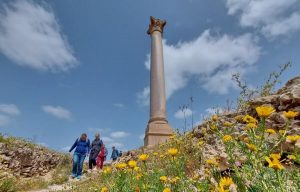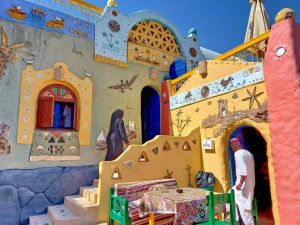The queen who became a ruler, Hatshepsut (c.1473–1458 BC), constructed a beautiful temple at Deir al-Bahari, on the west bank of Luxor. It is immediately across the Nile from Karnak Temple, the deity Amun’s primary shrine. Senenmut, Amun’s top steward, created Hatshepsut’s temple, Djeser-djeseru “the Holy of Holies”.

The temple is divided into three floors, each with a colonnade at the far end. Just beyond the portico on the topmost level is an open courtyard. Hatshepsut as Osiris, the deity of the dead, is shown in mummiform sculptures leaning on the pillars.

This is because Djeser-djeseru is Hatshepsut’s mortuary temple, where she performed her religion after she died and achieved the fortunate condition of Osiris. The temple isn’t exclusively dedicated to her; it also has portions dedicated to her renowned father Thutmose I, the goddess Hathor, and the burial deity Anubis. The religion of the solar RaHorakhty was honored with an altar that was exposed to the sky and the sun. Amun was awarded the honor of being first. A path carved directly into the living rock culminates in his shrine at the far end of the top courtyard, on the temple’s central axis.

Beautifully painted reliefs adorn the temple walls, representing temple rites, religious festivals, and even the transit of obelisks from the quarry to their final destiny in Karnak Temple. The reliefs in the portico on the so-called Middle Platform are perhaps the most noteworthy. Hatshepsut’s journey to Punt, which is thought to be near modern-day Eritrea, is depicted on the ornamental program on the left side. The residents of this region, their homes, and the surrounding environment are described in detail, as are the wealth and unusual creatures brought back by the Egyptians. Hatshepsut, on the other side of the portico, explains how she is Egypt’s legitimate king. She does this not just by saying that her father Thutmose I selected her as his successor, but also by alleging that her actual father was none other than Amun himself.










